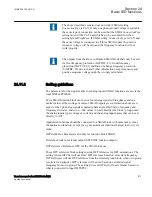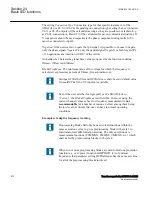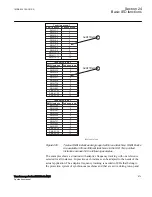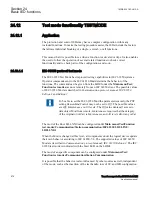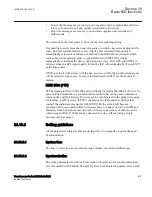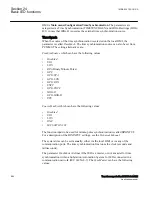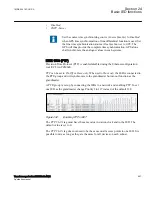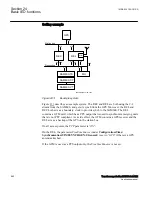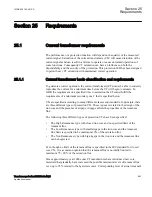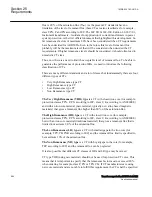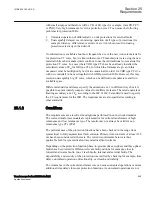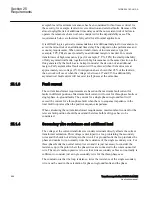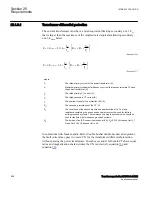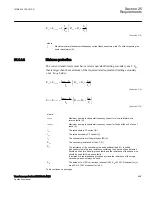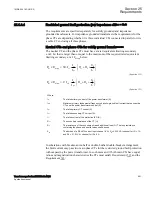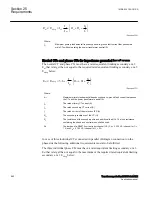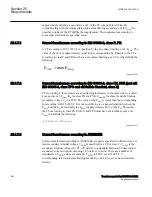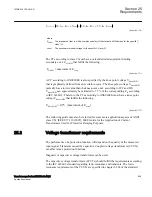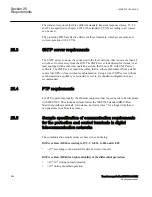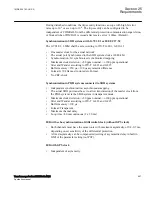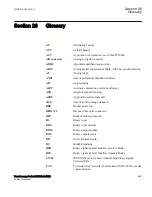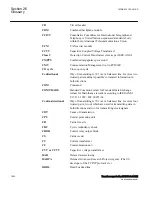
with small airgaps and therefore will be CTs of LR type (for example, class PR, TPY
or PXR). Very high remanence level in a protection core CT can cause the following
problems for protection IEDs:
1. Unwanted operation of differential (i.e. unit) protections for external faults
2. Unacceptably delayed or even missing operation of all types of protections (for
example, distance, differential, overcurrent, etc.) which can result in loosing
protection selectivity in the network
No information is available about how frequent the use of the new iron core material is
for protection CT cores, but it is known that some CT manufacturers are using the new
material while other manufacturers continue to use the old traditional core material for
protection CT cores. In a case where VHR type CTs have been already installed, the
calculated values of E
al
for HR type CTs, for which the formulas are given in this
document, must be multiplied by factor two-and-a-half in order for VHR type CTs (i.e.
with new material) to be used together with ABB protection IEDs. However, this may
result in unacceptably big CT cores, which can be difficult to manufacture and fit in
available space.
Different standards and classes specify the saturation e.m.f. in different ways but it is
possible to approximately compare values from different classes. The rated equivalent
limiting secondary e.m.f. E
al
according to the IEC 61869–2 standard is used to specify
the CT requirements for the IED. The requirements are also specified according to
other standards.
25.1.2
Conditions
M11610-3 v1
M11610-4 v4
The requirements are a result of investigations performed in our network simulator.
The current transformer models are representative for current transformers of high
remanence and low remanence type. The results may not always be valid for non
remanence type CTs (TPZ).
The performances of the protection functions have been checked in the range from
symmetrical to fully asymmetrical fault currents. Primary time constants of at least 120
ms have been considered at the tests. The current requirements below are thus
applicable both for symmetrical and asymmetrical fault currents.
Depending on the protection function phase-to-ground, phase-to-phase and three-phase
faults have been tested for different relevant fault positions for example, close in
forward and reverse faults, zone 1 reach faults, internal and external faults. The
dependability and security of the protection was verified by checking for example, time
delays, unwanted operations, directionality, overreach and stability.
The remanence in the current transformer core can cause unwanted operations or minor
additional time delays for some protection functions. As unwanted operations are not
1MRK 504 163-UUS A
Section 25
Requirements
Transformer protection RET670 2.2 ANSI
985
Application manual
Summary of Contents for RELION RET670
Page 1: ...RELION 670 SERIES Transformer protection RET670 Version 2 2 ANSI Application manual ...
Page 2: ......
Page 48: ...42 ...
Page 64: ...58 ...
Page 74: ...68 ...
Page 104: ...98 ...
Page 194: ...188 ...
Page 518: ...512 ...
Page 618: ...612 ...
Page 648: ...642 ...
Page 666: ...660 ...
Page 672: ...666 ...
Page 682: ...676 ...
Page 844: ...838 ...
Page 868: ...862 ...
Page 956: ...950 ...
Page 964: ...958 ...
Page 1004: ...998 ...
Page 1014: ...1008 ...
Page 1015: ...1009 ...

